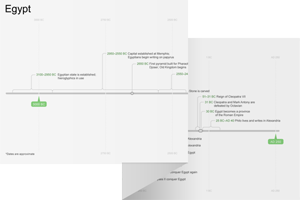7:1 a god to Pharaoh In 4:16, God promised that Aaron would consider Moses’ words as if they came from the mouth of God Himself. The same idea operates here—Moses will act as God to Pharaoh (see v. 2).
prophet See note on Gen 6:9. Here, “prophet” means a spokesperson. Aaron will serve as Moses’ mouthpiece because of Moses’ apparent speech impediment (see Exod 7:2; compare 4:10–17).
7:3 will harden the heart of Pharaoh See note on 4:21.
signs and my wonders The descriptions here and in v. 4 foreshadow the plagues that God will cast upon Egypt. Since the descriptions are plural, Moses should not assume Pharaoh will be quickly persuaded (see 3:19; 4:21; 5:21–23; 6:9). God will use Pharaoh’s arrogance and stubbornness to demonstrate the superiority of His power to the magicians and gods of Egypt.
7:5 I am Yahweh Pharaoh has not shown reverence for Yahweh (see note on 5:2). Here, his earlier question—“Who is Yahweh?”—will be answered. God will use Pharaoh’s “hard heart” to reveal His identity to Pharaoh and the nation of Egypt.
7:7 they spoke to Pharaoh Though this is Moses’ second meeting with Pharaoh (see ch. 5), it is the first opportunity to show Pharaoh the signs.
7:8–13 This passage recalls the sign God gave to Moses in 4:2–5. However, the Hebrew word used for “snake” here is different from the one used in 4:3. The Hebrew word used here, tannin, elsewhere in the ot indicates a great sea serpent (see Gen 1:21 and note). As in Genesis, this passage is intended to communicate the superiority of the Creator God over all created beings, including primordial chaos |
7:11 wise men The Hebrew word used here, chakham, is the common Hebrew term for an advisor of royalty, whether skilled in magical arts or not. In many cases, the term overlapped with those possessing such skills (see Dan 1–2).
sorcerers This Hebrew term, mekhasheph, is most frequently translated “sorcerer.” Comparative terminology in other Semitic languages indicates the Hebrew term used here may refer to one who concocts potions from plants or herbs.
the magicians of The Hebrew word used here, chartom, is related to an Egyptian term for a chief lector priest. Lector priests were learned scribes and oracles whose duties included reciting spells and prayers to appeal to the gods for advice.
7:12 swallowed up their staffs The magicians’ ability to mimic Moses and Aaron’s sign may demonstrate that they were performing a trick. While this is likely the case with the magicians, God’s serpent consumes the Egyptian snakes and returns to the form of Moses’ rod. The snake’s consumption of the others demonstrates the supremacy of the sign of Moses and Aaron over the deed of the magicians.
7:13 heart was hard Refers to selfish stubbornness born of arrogance. See note on Exod 4:21.
7:14–25 This passage narrates the first of 10 plagues with which God strikes Egypt. This plague was included in the signs God gave to Moses at the burning bush (see 4:9). |
7:16 the Hebrews See Gen 14:13 and note.
they may serve me in the desert See Exod 3:18 and note.
7:17 it will be changed to blood The Hebrew phrasing used here—the verb haphak (literally rendered “turn”) plus the preposition l- (literally rendered “to”)—typically describes a complete alteration, often of one thing into its opposite (Deut 23:5; Jer 31:13; Amos 5:8). This plague may be understood literally—the water of Egypt changed into blood.
 Ten Plagues on Egypt Table
Ten Plagues on Egypt Table
7:19 stone This plague affected more than just the Nile proper.
7:21 all the land of While some of the plagues did not affect the territory of Goshen where the Israelites live (8:22; 9:26), no such qualifier is included in this passage. However, the text only records that the Egyptians could not drink the water of the Nile, which may imply that the Israelites were not affected.
7:22 with their secret arts Rather than solve the problem, the Egyptian magicians worsen it. Their ability to mimic turning water into blood suggests the act was magical trickery (see note on v. 12). However, their skill cannot match the scale of what God does through Moses (v. 19).
7:24 for water to drink Explains how the Egyptians survived seven days of this plague (v. 25).

|
About Faithlife Study BibleFaithlife Study Bible (FSB) is your guide to the ancient world of the Old and New Testaments, with study notes and articles that draw from a wide range of academic research. FSB helps you learn how to think about interpretation methods and issues so that you can gain a deeper understanding of the text. |
| Copyright |
Copyright 2012 Logos Bible Software. |
| Support Info | fsb |
 Loading…
Loading…
 monsters.
monsters. 
